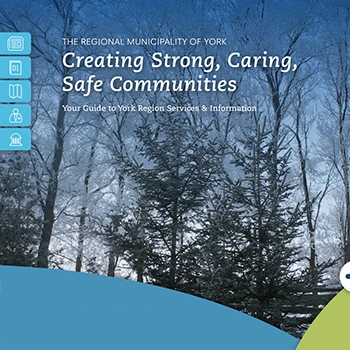What exactly is a website style guide and why does our brand need one?
A web style guide protects and maintains your brand long-term by empowering stakeholders and designers to stay aligned with look-and-feel, tone, and experience details. Through our Experience Thinking framework, style guides ensure consistent brand expression across all digital touchpoints while supporting content strategy, product interactions, and service delivery.
Tip: View style guides as brand insurance that preserves your design investment and prevents costly inconsistencies as your digital presence grows.
How does Akendi approach website style guide design differently?
We create style guides that extend beyond visual elements to capture the complete brand system including identity patterns, applications, and standards. Our approach connects brand strategy to digital implementation through Experience Thinking principles, ensuring your style guide supports cohesive experiences across brand, content, product, and service touchpoints.
Tip: Look for style guide approaches that connect brand strategy to practical implementation rather than just documenting visual elements.
What's the difference between a style guide and a design system?
Style guides document visual standards while design systems include reusable components, code frameworks, and development resources. Modern style guides evolve into comprehensive design systems with component libraries, pattern libraries, design tokens, and governance frameworks that scale across platforms and teams.
Tip: Plan for your style guide to evolve into a full design system as your digital presence and team grows.
How do style guides support brand consistency across different platforms?
Style guides provide unified language and standards that maintain brand identity across websites, mobile apps, social media, and emerging platforms. Through Experience Thinking brand management, style guides ensure consistent expression while allowing appropriate adaptation for different contexts and user expectations.
Tip: Create platform-specific guidance within your style guide rather than trying to apply identical elements everywhere.
What business value does investing in a website style guide provide?
Style guides reduce design and development costs through reusable components, accelerate project timelines, improve brand recognition, and strengthen customer trust through consistency. They prevent costly redesigns, reduce decision-making time, and enable faster scaling of digital initiatives while maintaining quality standards.
Tip: Calculate the cost of design inconsistencies and rework versus style guide investment to build a strong business case.
How does foresight design influence style guide strategy?
Foresight design helps create style guides that anticipate future brand needs, emerging technologies, and evolving user expectations. We design flexible systems that accommodate growth, new platforms, and changing design trends while maintaining core brand integrity. This forward-thinking approach ensures longevity and adaptability.
Tip: Build flexibility into your style guide architecture to accommodate future brand evolution without requiring complete overhauls.
When should organizations invest in creating a website style guide?
Invest in style guides when you have multiple digital touchpoints, growing design teams, frequent brand applications, or inconsistent brand expression. Style guides become critical after brand investment, during digital expansion, or when scaling requires systematic brand management and governance across organizations.
Tip: Create style guides proactively during brand development rather than reactively after inconsistencies emerge.
What components should be included in a website style guide?
Modern style guides include brand identity elements, typography systems, color palettes, component libraries, pattern libraries, code frameworks, usage guidelines, and governance standards. Through Experience Thinking, we ensure components support brand expression, content strategy, product functionality, and service delivery across your complete experience ecosystem.
Tip: Prioritize components based on your most common design decisions and team needs rather than trying to document everything initially.
How do you determine the appropriate scope for our style guide?
Scope depends on your brand complexity, digital touchpoints, team size, and growth plans. We assess current brand applications, future needs, team workflows, and technical requirements to create appropriately scaled style guides that provide value without overwhelming users or requiring excessive maintenance.
Tip: Start with core elements that solve immediate consistency problems, then expand based on actual usage and team feedback.
What are design tokens and how do they fit into style guides?
Design tokens are reusable design decisions stored as data - colors, typography, spacing, and sizing - that maintain consistency across platforms. They enable systematic design scaling, automated updates across applications, and seamless handoffs between design and development teams while preserving brand integrity.
Tip: Implement design tokens early in style guide development to enable easier scaling and maintenance across multiple platforms.
How do component libraries enhance website style guides?
Component libraries provide reusable UI elements like buttons, forms, navigation, and cards that ensure consistency while accelerating development. They include behavioral guidelines, accessibility standards, responsive patterns, and code implementations that maintain quality while enabling rapid prototyping and deployment.
Tip: Design components for maximum reusability across different contexts rather than creating single-use elements.
What's the role of pattern libraries in modern style guides?
Pattern libraries document best practices for common user interactions like form validation, navigation flows, search patterns, and error handling. They ensure consistent user experience patterns while providing guidance for complex interactions that go beyond individual component usage.
Tip: Focus pattern libraries on user workflows and interactions that occur frequently across your digital properties.
How do accessibility standards integrate with style guide components?
Accessibility integration includes color contrast requirements, keyboard navigation patterns, screen reader compatibility, and inclusive design principles built into every component. We ensure style guides promote accessible design by default rather than treating accessibility as an afterthought or separate consideration.
Tip: Build accessibility requirements into component specifications rather than adding them as separate guidelines.
What documentation approach works best for style guide components?
Effective documentation includes visual examples, usage guidelines, code snippets, do-and-don't examples, and interactive demonstrations. We create documentation that serves both designers and developers with appropriate detail levels, search functionality, and regular updates that keep information current and useful.
Tip: Create documentation that shows components in context rather than just isolated examples to improve practical application.
What's your process for developing website style guides?
Our process follows Experience Thinking methodology: discovery of brand environment and audit, strategy development including brand positioning, design phase creating brand concepts and identity systems, and implementation including style guide creation and brand management. Each phase ensures style guides reflect strategic brand goals.
Tip: Ensure style guide development includes stakeholder input and user testing rather than purely internal design decisions.
How do you audit existing brand elements before creating style guides?
Brand audits examine current digital touchpoints, identify inconsistencies, catalog existing elements, and assess competitive landscape. We analyze what works, what needs improvement, and what gaps exist in current brand application. This foundation informs style guide priorities and component development.
Tip: Document current brand inconsistencies to demonstrate style guide value and guide priority development areas.
How do you test style guide components with users?
Testing includes usability validation of interactive components, accessibility testing with assistive technologies, brand perception testing for visual elements, and developer usability testing for implementation guidance. We ensure style guides create positive user experiences while maintaining development efficiency.
Tip: Test style guide components in realistic application contexts rather than isolation to identify practical usage issues.
What's your approach to stakeholder collaboration during style guide development?
Collaboration includes brand strategy workshops, design review sessions, component validation with development teams, and approval processes for final standards. We ensure stakeholder buy-in while maintaining design quality and strategic alignment throughout the development process.
Tip: Establish clear decision-making authority and approval processes upfront to prevent delays and scope creep during development.
How do you ensure style guides work across different technical platforms?
Cross-platform compatibility requires understanding technical constraints, creating flexible design tokens, providing multiple implementation formats, and testing across target environments. We work closely with development teams to ensure style guide components translate effectively to code.
Tip: Include technical stakeholders early in style guide development to identify platform constraints and implementation requirements.
What iteration process do you use for refining style guide components?
Iteration involves usage monitoring, feedback collection, performance analysis, and regular updates based on real-world application. We establish update cycles, version control, and change management processes that keep style guides current while maintaining stability for active projects.
Tip: Plan for ongoing style guide evolution rather than treating it as a one-time deliverable.
How do you validate style guide effectiveness before launch?
Validation includes pilot implementations, team usability testing, consistency audits, and stakeholder approval processes. We ensure style guides actually solve intended problems and provide value to users before full deployment across organizations and projects.
Tip: Pilot test style guides with real projects and teams rather than just theoretical validation to identify practical issues.
How do you ensure style guide adoption across design and development teams?
Adoption requires training programs, clear implementation guidelines, tool integration, and change management support. Through Experience Thinking brand management, we establish governance models that make style guide usage beneficial rather than burdensome while maintaining quality standards and brand consistency.
Tip: Make style guide adoption easier than creating custom solutions by providing excellent tools and documentation.
What governance model works best for maintaining style guide consistency?
Governance includes defined roles and responsibilities, approval processes, update procedures, and quality monitoring. We establish systems that balance consistency requirements with team autonomy, creating frameworks that scale with organizational growth while maintaining brand integrity.
Tip: Create governance that focuses on outcomes and principles rather than rigid process requirements to maintain team efficiency.
How do you handle style guide updates and version control?
Version control includes systematic update processes, change documentation, migration guidance, and communication protocols. We establish systems that enable evolution while maintaining stability for active projects and clear communication about changes and their implications.
Tip: Plan update communication and migration support before making style guide changes to minimize team disruption.
What training do you provide for teams using new style guides?
Training includes workshops on style guide principles, hands-on component usage, implementation guidance, and ongoing support resources. We create learning materials appropriate for different roles - designers, developers, content creators - with practical examples and troubleshooting guidance.
Tip: Provide role-specific training that focuses on practical application rather than comprehensive style guide overview.
How do you monitor style guide compliance and usage?
Monitoring involves regular audits, usage analytics, feedback collection, and quality reviews across digital touchpoints. We establish systems that identify inconsistencies early and provide data for style guide improvements while maintaining reasonable oversight without micromanagement.
Tip: Focus monitoring on high-impact touchpoints and customer-facing applications rather than trying to audit everything.
What happens when teams need components not included in the style guide?
Extension processes include component request procedures, design review workflows, approval criteria, and integration protocols. We create frameworks that allow appropriate innovation while maintaining consistency and ensuring new components align with brand strategy and user needs.
Tip: Establish clear criteria for adding new components versus customizing existing ones to prevent style guide bloat.
How do you handle style guide conflicts with existing brand applications?
Conflict resolution involves impact assessment, migration planning, stakeholder communication, and phased implementation strategies. We balance style guide benefits with practical constraints while providing clear guidance for resolving inconsistencies and updating existing applications.
Tip: Prioritize high-visibility and customer-facing applications for style guide implementation rather than trying to update everything simultaneously.
How do you use AI to enhance website style guide development and maintenance?
AI enhances style guide creation through automated component generation, consistency checking, accessibility validation, and documentation generation. We use AI for pattern recognition, design token optimization, and maintenance automation while maintaining human oversight for strategic decisions and brand alignment. AI helps scale style guide operations without replacing design judgment.
Tip: Implement AI tools for routine maintenance and consistency checking while keeping human designers responsible for strategic brand decisions.
What tools and platforms do you use for style guide development?
We use industry-leading design tools, code repositories, documentation platforms, and collaboration systems that integrate with existing workflows. Tool selection depends on team preferences, technical requirements, and integration needs while ensuring accessibility and long-term maintainability.
Tip: Choose style guide tools that integrate with your existing design and development workflow rather than requiring completely new processes.
How do style guides integrate with content management systems?
CMS integration includes component libraries, style templates, content formatting guidelines, and approval workflows that maintain brand consistency within content creation processes. We ensure content creators can apply brand standards easily without requiring design expertise.
Tip: Build style guide integration into content creation workflows rather than expecting content creators to reference separate documentation.
What's your approach to responsive design within style guides?
Responsive design includes flexible grid systems, scalable typography, adaptive components, and device-specific patterns that maintain brand consistency across screen sizes. We create guidelines that enable effective responsive implementation while preserving brand integrity and user experience quality.
Tip: Define responsive behavior at the component level rather than just providing general responsive guidelines.
How do you ensure style guide compatibility with emerging technologies?
Future compatibility requires flexible architectures, platform-agnostic design tokens, modular component structures, and adaptation guidelines for new interfaces. Foresight design principles help create style guides that accommodate emerging platforms like AR/VR, voice interfaces, and new interaction paradigms.
Tip: Build style guides with abstract design principles that can adapt to new technologies rather than platform-specific implementations.
What development handoff process do you recommend for style guide components?
Handoff includes detailed specifications, code examples, asset packages, and collaboration protocols that enable accurate implementation. We provide developers with clear guidelines, implementation notes, and quality assurance criteria that maintain design integrity during development.
Tip: Include both visual specifications and functional requirements in development handoffs rather than just static design files.
How do you handle style guide performance optimization?
Performance optimization includes efficient asset delivery, optimized component code, loading strategies, and performance monitoring. We ensure style guide implementations maintain fast loading times and responsive interactions while preserving visual quality and functionality.
Tip: Build performance requirements into style guide specifications rather than treating optimization as a separate consideration.
How do style guides evolve as brands and organizations grow?
Growth requires scalable architectures, modular systems, clear governance models, and evolution planning. Through Experience Thinking brand extension principles, we create style guides that accommodate new products, markets, audiences, and business needs while maintaining core brand integrity and recognition.
Tip: Plan for scale from the beginning by creating modular, extensible style guide architectures rather than monolithic systems.
What maintenance schedule do you recommend for style guides?
Maintenance includes regular audits, component updates, technology refresh cycles, and strategic reviews aligned with brand evolution. We establish schedules that keep style guides current with design trends, technology changes, and business needs while maintaining stability for active projects.
Tip: Tie style guide maintenance to business cycles and technology refresh schedules rather than arbitrary timelines.
How do you handle style guide complexity as component libraries grow?
Complexity management includes organizational systems, search functionality, usage analytics, and retirement protocols for outdated components. We create structures that enable finding and using appropriate components while preventing bloat and maintaining system clarity.
Tip: Regularly audit and retire unused components rather than allowing style guides to accumulate legacy elements indefinitely.
What's your approach to multi-brand style guide systems?
Multi-brand systems require shared foundations with brand-specific variations, inheritance models, and governance frameworks that maintain individual brand integrity while enabling operational efficiency. We create architectures that balance consistency with differentiation needs.
Tip: Identify truly shared elements versus brand-specific variations early to avoid over-standardization or unnecessary duplication.
How do you measure style guide success and ROI over time?
Success measurement includes consistency audits, development efficiency metrics, brand recognition studies, and cost analysis. We track how style guides improve design velocity, reduce rework, strengthen brand perception, and enable business growth while identifying areas for optimization.
Tip: Establish baseline metrics before style guide implementation to demonstrate concrete improvements and business value.
What happens when style guides need major updates or redesigns?
Major updates require impact assessment, migration planning, stakeholder communication, and phased implementation strategies. We balance innovation needs with practical constraints while providing clear guidance for updating applications and managing transition periods.
Tip: Plan major style guide updates around natural refresh cycles for key applications rather than forcing immediate universal adoption.
How do you future-proof style guides against changing design trends?
Future-proofing involves timeless design principles, flexible implementation systems, trend evaluation frameworks, and evolution planning. Foresight design approaches help distinguish between lasting improvements and temporary trends while creating style guides that remain relevant and valuable over time.
Tip: Base style guide foundations on enduring brand principles rather than current design trends to ensure longevity.
How do you demonstrate the ROI of website style guide investment?
ROI measurement includes reduced design and development time, decreased revision cycles, improved brand consistency metrics, faster project delivery, and enhanced customer recognition. Through Experience Thinking measurement, we track how style guides improve brand perception, content effectiveness, product experiences, and service delivery across your complete ecosystem.
Tip: Track both hard metrics like development time savings and soft metrics like brand consistency improvements to demonstrate full value.
What metrics indicate successful style guide implementation?
Success metrics include adoption rates across teams, consistency scores in brand audits, development velocity improvements, reduced design debt, and improved user experience metrics. We also measure stakeholder satisfaction, maintenance efficiency, and business impact indicators that demonstrate style guide value.
Tip: Establish metrics that matter to different stakeholders rather than using only design-focused measurements.
How do style guides impact website performance and user experience?
Performance improvements include faster loading through optimized components, better user recognition through consistency, reduced cognitive load through familiar patterns, and improved accessibility through standardized implementations. Style guides create predictable, efficient user experiences that support business goals.
Tip: Monitor user experience metrics before and after style guide implementation to demonstrate impact on customer satisfaction and engagement.
What cost savings can organizations expect from style guide implementation?
Cost savings include reduced design time through reusable components, faster development through standardized code, decreased QA time through tested patterns, lower maintenance costs through systematic approaches, and reduced rework through clear guidelines. Savings compound over time and across projects.
Tip: Calculate savings across the complete project lifecycle rather than just initial development to understand full financial impact.
How do you measure brand consistency improvements from style guides?
Consistency measurement includes visual audits across touchpoints, brand recognition studies, customer perception research, and systematic evaluation of brand application quality. We track improvements in brand coherence and stakeholder alignment with brand standards over time.
Tip: Use both automated consistency checking tools and human evaluation to get complete picture of brand consistency improvements.
What long-term benefits do style guides provide beyond immediate cost savings?
Long-term benefits include stronger brand equity, improved team collaboration, faster innovation cycles, easier scaling, enhanced customer loyalty, and competitive differentiation. Style guides become strategic assets that enable business growth and market positioning over time.
Tip: Position style guides as strategic brand investments rather than just operational efficiency tools to gain executive support.
How do you help organizations maximize value from their style guide investment?
Value maximization includes comprehensive adoption support, ongoing optimization, usage analytics, regular audits, and strategic guidance for evolution. We help organizations fully leverage style guide capabilities while adapting to changing needs and opportunities for continuous improvement.
Tip: Treat style guides as living systems requiring ongoing investment and optimization rather than one-time deliverables.












